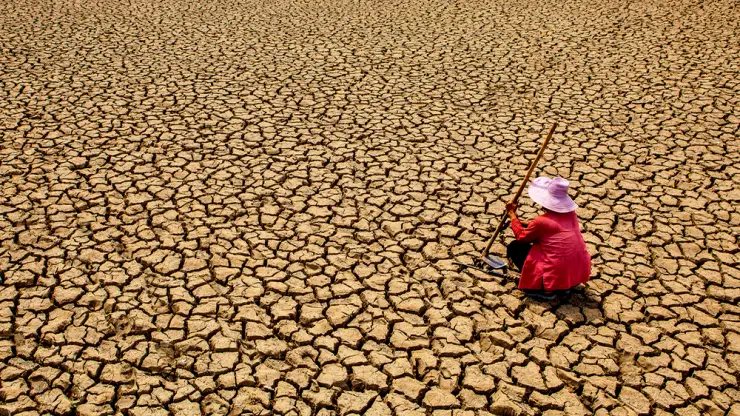Water Scarcity in Bengaluru.
Current Situation
Bengaluru, like many other cities, grapples with water scarcity. Here are some key points:
Supply-Demand Gap: The city receives around 1,450 million liters per day (MLD) of water from the Cauvery River, but it faces a shortfall of 1,680 MLD. The gap between demand and supply persists, affecting millions of lives.
Rising Population: Bengaluru’s population is expected to soar to 20.3 million by 2031. This growth exacerbates the water crisis, throwing the balance off between supply and demand.
Climate Change: Changing weather patterns due to climate change impact water availability. Delayed monsoons and drying reservoirs worsen the situation.
Water Scarcity in India: A Looming Challenge
Nationwide Crisis: India is currently grappling with a severe water crisis. According to a 2019 report by the National Institution for Transforming India (NITI Aayog), the best estimates indicate that India’s water demand will exceed supply by a factor of two by 2030. This alarming situation affects every state in the country.
Groundwater Depletion: Groundwater, a critical resource for irrigation and domestic use, is depleting rapidly. Overexploitation has led to falling water tables in many regions. States like Punjab, known for extensive tubewell irrigation, face drastic declines in groundwater levels.
Climate Change Impact: Climate change exacerbates water stress. Erratic monsoons, prolonged droughts, and extreme weather events strain water availability. As temperatures rise, evaporation rates increase, further challenging water resources.
Urbanization Pressure: Rapid urbanization strains water supply systems. Cities like Mumbai, Delhi, and Chennai grapple with increasing demand, inadequate infrastructure, and pollution of water bodies.
Agricultural Demands: Agriculture consumes the lion’s share of water. States like Maharashtra, Gujarat, and Andhra Pradesh face agricultural water scarcity due to inefficient irrigation practices and crop choices.
Water Quality Concerns: While India receives substantial rainfall, nearly 70% of surface water is unfit for human consumption due to pollution. Poor water quality affects health and agriculture.
Population Growth: India’s population is projected to reach 1.6 billion by 2050. As the population grows, water demand intensifies, putting immense pressure on existing resources.
Nationwide Crisis: India is currently grappling with a severe water crisis. According to a 2019 report by the National Institution for Transforming India (NITI Aayog), the best estimates indicate that India’s water demand will exceed supply by a factor of two by 2030. This alarming situation affects every state in the country.
Groundwater Depletion: Groundwater, a critical resource for irrigation and domestic use, is depleting rapidly. Overexploitation has led to falling water tables in many regions. States like Punjab, known for extensive tubewell irrigation, face drastic declines in groundwater levels.
Climate Change Impact: Climate change exacerbates water stress. Erratic monsoons, prolonged droughts, and extreme weather events strain water availability. As temperatures rise, evaporation rates increase, further challenging water resources.
Urbanization Pressure: Rapid urbanization strains water supply systems. Cities like Mumbai, Delhi, and Chennai grapple with increasing demand, inadequate infrastructure, and pollution of water bodies.
Agricultural Demands: Agriculture consumes the lion’s share of water. States like Maharashtra, Gujarat, and Andhra Pradesh face agricultural water scarcity due to inefficient irrigation practices and crop choices.
Water Quality Concerns: While India receives substantial rainfall, nearly 70% of surface water is unfit for human consumption due to pollution. Poor water quality affects health and agriculture.
Population Growth: India’s population is projected to reach 1.6 billion by 2050. As the population grows, water demand intensifies, putting immense pressure on existing resources.
Addressing the Crisis
Community-Led Initiatives: Programs like the Atal Bhujal Yojana engage communities in groundwater management. Villagers learn about water availability and usage patterns, enabling better conservation.
Reviving Ancient Stepwells: Restoring ancient stepwells (baoli, bawri, or vav) offers hope. These architectural marvels were built to provide year-round water access. Initiatives to revive stepwells are gaining momentum.
Rainwater Harvesting: Encouraging rainwater harvesting at individual and community levels can augment water supply.
Technology and Innovation: Leveraging technology for efficient water management, desalination, and wastewater treatment is crucial.
Awareness and Education: Educating citizens about water conservation and responsible usage is essential.
Community-Led Initiatives: Programs like the Atal Bhujal Yojana engage communities in groundwater management. Villagers learn about water availability and usage patterns, enabling better conservation.
Reviving Ancient Stepwells: Restoring ancient stepwells (baoli, bawri, or vav) offers hope. These architectural marvels were built to provide year-round water access. Initiatives to revive stepwells are gaining momentum.
Rainwater Harvesting: Encouraging rainwater harvesting at individual and community levels can augment water supply.
Technology and Innovation: Leveraging technology for efficient water management, desalination, and wastewater treatment is crucial.
Awareness and Education: Educating citizens about water conservation and responsible usage is essential.
Effects on Living Organisms
Human Health: Insufficient clean water affects health. Lack of access to safe drinking water leads to water-borne diseases like cholera and typhoid.
Ecosystems: Water scarcity disrupts ecosystems. Wetlands and forests, which naturally collect, filter, and store water, are crucial. Their degradation harms biodiversity and nutrient cycling.
Food Chains: Freshwater habitats (rivers, lakes) host diverse species. Shrinking habitats due to over-extraction affect food chains and species distribution.
Solutions
Water Management: Proper governance of water as a global common good is essential. We need to understand the links between water, climate change, and biodiversity loss.
Preserve Ecosystems: Restore and protect wetlands, forests, and other natural systems that regulate water flow.
Efficient Irrigation: Promote micro-irrigation techniques (drip, sprinkler) to reduce water loss in agriculture.
Water Recycling: Implement water recycling systems to reduce consumption.
Rainwater Harvesting: Encourage rainwater harvesting at individual and community levels.
Desalination: Explore desalination technologies for coastal cities.
Education and Awareness: Raise awareness about water conservation and responsible usage.
Conclusion
Bengaluru’s water scarcity is a pressing issue, but with concerted efforts, sustainable solutions can mitigate its impact on both humans and ecosystems. Let’s prioritize water as the precious resource it truly is. 💧🌿🌍



No comments: